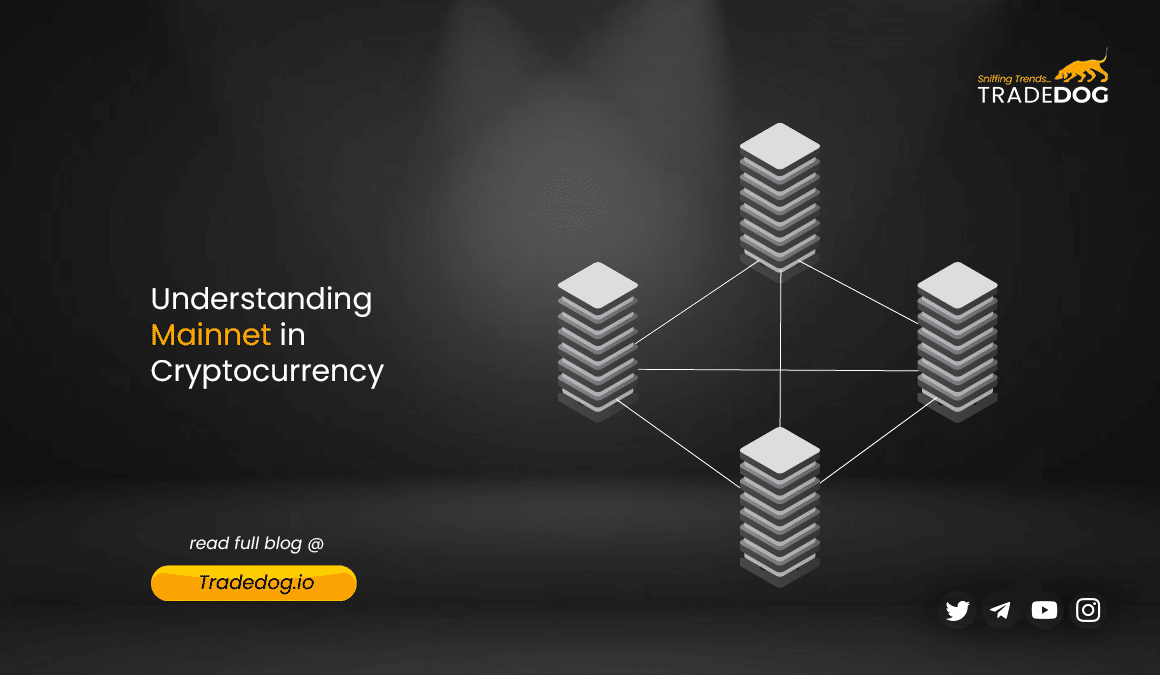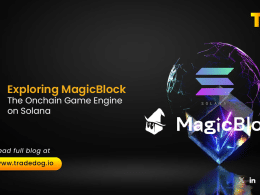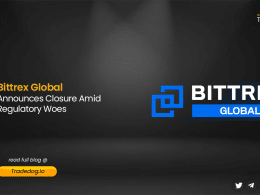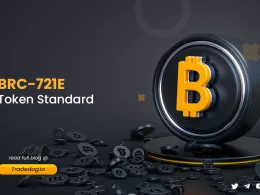Quick Links
Blockchain technology has revolutionized various industries with its core concepts of distributed ledgers and immutability. Imagine a giant, decentralized database, constantly recording and verifying transactions – that’s the essence of a blockchain. But how does this technology transition from theory to real-world applications? Enter the mainnet. A mainnet is the live, operational version of a blockchain network, where real-world transactions occur with tangible value.
What is a Mainnet?
A mainnet acts as the backbone of a blockchain ecosystem. It’s where validated transactions are permanently recorded on the distributed ledger, accessible to all participants. It involves nodes, which are individual participants or computers in the blockchain network. These nodes maintain the integrity of the network by independently verifying transactions and storing the blockchain data. There are two main types of nodes:
- Full Nodes: These heavyweights store the entire blockchain history, acting as independent record keepers. They ensure data consistency across the network.
- Light Nodes: These streamlined nodes store only essential information, relying on full nodes for complete data verification. This makes them more efficient in terms of storage and processing power.
To ensure agreement on transaction validity, mainnets rely on consensus mechanisms. These protocols are like the network’s rulebook, dictating how participants reach a consensus on the state of the blockchain. Here are some popular mechanisms:
- Proof of Work (PoW): This well-established mechanism uses miners who solve complex computational puzzles to validate transactions and secure the network. Bitcoin famously utilizes PoW.
- Proof of Stake (PoS): Here, validators with a stake (ownership) in the cryptocurrency are chosen to validate transactions, making the process more energy-efficient compared to PoW. Ethereum has transitioned to a PoS model.
How Does a Mainnet Work?
A mainnet works by validating and recording transactions on the blockchain. When a transaction is initiated, it is verified by nodes through the consensus mechanism. Once validated, the transaction is added to a block, which is then added to the blockchain.
Here’s a simplified breakdown:
Imagine A sending B some cryptocurrency on a mainnet.
- Transaction Broadcast: A broadcasts his transaction to the network, containing details like the amount and recipient.
- Validation: Miners/Validators verify the transaction based on the consensus mechanism. This may involve checking A’s account balance and cryptographic signatures.
- Block Creation: Validated transactions are bundled into blocks. Miners/Validators compete (depending on the mechanism) to add these blocks to the blockchain.
- Consensus and Immutability: Once a block is added, it becomes part of the permanent, tamper-proof record, visible to all participants. This is the essence of immutability.
Benefits of Mainnet
Decentralization
Mainnets excel in decentralizing control by distributing authority and operation across multiple network nodes. This approach reduces the risk of censorship, enhances transparency, and prevents any single entity from monopolizing the network.
Immutable Records
Transactions conducted on Mainnets are permanently recorded and cannot be modified or tampered with, establishing trust and accountability in transactions.
Fortified Security
Mainnets prioritize security with robust features including cryptographic encryption and consensus mechanisms which are crucial for protecting transactions, preventing fraudulent activities, and upholding trust within the network.
Scalability
Many Mainnets incorporate features that support network scalability, enabling them to handle increased transaction volumes and accommodate a growing user base.
Interoperability
Some Mainnets are designed to be interoperable with other blockchain networks, enhancing functionality and extending reach by allowing interaction with other blockchain ecosystems.
Innovation Hub
Mainnet launches provide developers with a real-world platform where developers can create dApps on an operational network, encouraging growth and advancement.
Challenges in a Mainnet
Upgrade Difficulties
Implementing upgrades or alterations to Mainnets can be intricate. Achieving consensus among network participants for protocol changes is arduous and can lead to contentious hard forks, potentially fracturing the community.
Scalability Barriers
Mainnets encounter hurdles in attaining widespread adoption. Limited awareness, complex user interfaces, and technological complexities dissuade non-technical users from engaging with the network, impeding its growth.
Resource Intensive
Operating nodes on Mainnets demands significant resources, including computing power and storage capacity. This resource intensity may restrict participation to individuals or entities with substantial resources, affecting network inclusivity.
Interoperability Issues
While some Mainnets strive for interoperability, seamlessly integrating with other Blockchain networks and traditional financial systems remains a persistent challenge. Interoperability gaps hamper the full realization of Mainnets’ potential.
Security Considerations on Mainnets
While mainnets offer a robust infrastructure for blockchain operations, they are not invincible. Here are some potential security threats:
Hacking Attempts
Just like any digital system, mainnets are vulnerable to cyberattacks. Malicious actors may attempt to steal cryptocurrency or disrupt network operations. Some common attack vectors include:
- Phishing Attacks: Deceptive emails or websites lure users into revealing their private keys or wallet information. Practicing good cyber hygiene and using strong passwords are essential defenses.
- Smart Contract Vulnerabilities: Bugs or exploits in smart contracts can allow attackers to steal funds or manipulate the contract’s functionality. Thorough code audits and security best practices during development are crucial.
- Social Engineering Attacks: These attacks exploit human psychology to trick users into compromising their security. Educating users about social engineering tactics and promoting multi-factor authentication can help mitigate these risks.
51% Attack
In theory, if someone controls more than half of the network’s computing power (PoW) or stake (PoS), they could potentially manipulate transactions. This dominance allows the attacker to potentially manipulate transactions, rewrite transaction history, or even prevent new transactions from being confirmed. While these cases are rare, it is still a significant concern for smaller blockchains. They also highlight the importance of:
- Network Decentralization: A well-distributed network with a large number of participants makes it more expensive and resource-intensive to launch a successful 51% attack.
- Economic Incentives: Consensus mechanisms are often designed with economic incentives that discourage malicious behavior. For example, in Proof of Stake, validators lose their stake if they attempt to manipulate the network
Security of Underlying Infrastructure
The security of a mainnet also depends on the security of the underlying infrastructure, such as cloud service providers or internet exchanges. Breaches or vulnerabilities in these systems could potentially impact the blockchain network.
Mitigating Security Risks
Various strategies are employed to keep the mainnet secure. Some of the key approaches include:
- Security Audits: Regular security audits by independent experts are crucial for identifying and patching vulnerabilities in smart contracts and core network protocols.
- Bug Bounty Programs: Many blockchain projects incentivize security researchers to discover and report vulnerabilities by offering rewards for finding and responsibly disclosing bugs.
- Continuous Improvement: The blockchain ecosystem is constantly evolving, with developers working on new security protocols and consensus mechanisms to address emerging threats and enhance overall network security.
Comparison with Testnets
Blockchains like any complex system require thorough testing before real-world use. This is where mainnets and testnets come in. A mainnet is the final, public blockchain network where real transactions with real value occur. In contrast, a testnet acts as a separate, simulated environment for developers to build, test, and refine their applications and smart contracts before deployment on the mainnet. The following table highlights the key differences between these two network types.
| Feature | Mainnet | Testnet |
| Purpose | Live, operational network | Testing and development environment |
| Risk | High (impacts real users and assets) | Low (no impact on real users or assets) |
| Cost of Operations | Higher (transaction fees apply) | Lower (may have minimal fees) |
| Network Security | More secure (more nodes) | Less secure (fewer nodes) |
| Transaction Frequency | Higher | Lower |
| Community | Larger, broader user and investor community | Smaller, developer focused |
Future Outlook
Mainnets serve as the foundation of blockchain ecosystems, where validated transactions are permanently recorded on a distributed ledger accessible to all participants. They involve nodes, individual participants or computers in the network, maintaining its integrity by independently verifying transactions and storing blockchain data. As the digital world increasingly adopts blockchain technology, mainnets will play a crucial role in shaping decentralized finance. Ongoing developments in scalability, interoperability, and security are key areas of focus, promising a future where mainnets facilitate secure, transparent, and efficient transactions across diverse industries.









